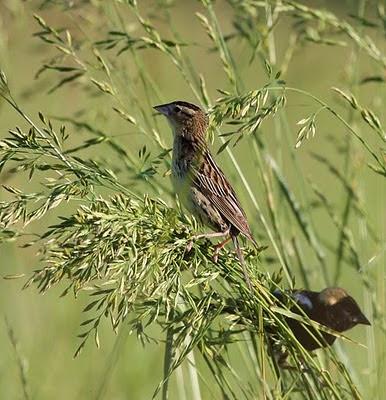
Christmas Bird Counts get me outside in a season when I am often content to dream of warmer days and more abundant birds. On the 18th of December we conducted the 20th Craven-Lumsden CBC, centring the 24 km diameter circle on the village of Craven.
Starting at daylight, we managed to find 30 species for the day, our second best record. Highlights included sightings of a Hooded Merganser and a Common Goldeneye on an open stretch of the Qu'Appelle River near Craven, both Bald and Golden Eagles flying in the valley, a Snowy Owl along Highway 11 just south of the valley, a single robin in Lumsden, two Golden-crowned Kinglets also in Lumsden, a high of 69 Ravens (including 21 at a single deer carcass), 12 Horned Larks, and a group of 9 American Goldfinches coming to a feeder at an acreage. As well, we recorded 14 mammal species, including 3 coyotes, a least weasel, 120 white-tailed deer, and 29 mule deer.
I left my camera at home for the Craven-Lumsden count, but took it along with me for the countryside portion of the Regina CBC, which was on December 27. We had a warm day for the Regina count and the birdlife responded. We found 21 species in our quadrant alone (the southwest portion of the circle), including Sharp-shinned and Red-tailed Hawks. No pictures of those two, but in the afternoon I took a few photos--some more succcessful than others, but even the fuzzier images convey something of birdlife on the erstwhile prairie.
Driving the backroads south and west of Regina as I have done on this count many times before with my friend Bob Luterbach, it was easy to believe the official statistics declaring that 99.07% of the landscape surrounding this city has lost its native cover. Still, there were some native birds to count, including three Horned Larks. This image shows one on a gravel road, where they often come to consume grit.

The other roadside passerine or songbird we found was the Snow Bunting, for whom the northern plains is a wintering ground. We saw one small flock, including this one:

Here was the only Snowy Owl we found. This first image shows how easily they fade into the white backdrop--especially an adult male like this one.

We had initially flushed it at roadside and then had some difficulty finding it until it swiveled its head, showing the dark spots of eyes and bill.

When it flew, we quickly lost it in the flat light beneath an overcast sky.

Toward dusk we lucked onto a Great Horned Owl a mile west of the city.

After that we saw a Northern Shrike cross the road and land briefly on the top of a tree--too briefly for me to get a photo of anything other than its tail.

Light conditions were much better for the Indian Head Christmas Bird Count on December 30, where I joined with Lorne Scott, Gary Seib and Karen McIver to count birds and mammals for the day. We recorded 19 species of birds in our sector (including American White Pelican and Pied-billed Grebe), covering the countryside at the south end of Katepwa Lake and then to the west of Indian Head, before we headed south to the areas I am most familiar with near our place at Cherry Lake. One of the great surprises of the Indian Head count was the number of Sharp-tailed Grouse we found. The largest flock was along highway 56 north of town where we counted 32 among some hedgerows. Here is one we found at roadside near the town dump where we counted scores of ravens and magpies.

We ended up with a total of 72 Sharp-tails for the day--much better than any of us would have expected. Lorne said the species has been scarce all around Indian Head, and I'd have to say the same for the land I survey near Cherry Lake.
After we counted Blue Jays, Hairy and Downy Woodpeckers and Black-capped Chickadees in Lorne's farm yard--which includes the best bird feeding set-up I have ever seen--we came upon the local group of Ruffed Grouse who show up beneath Lorne's feeders at dusk every day. The five of them were sitting in the Aspen bush along Lorne's driveway. This male was the less common rufous-phase, which became clear once he started to strutt.

You can have some fun looking at the historical results of Christmas Bird Counts,species by species, and region by region by going to this site managed by the American Audubon Society.









